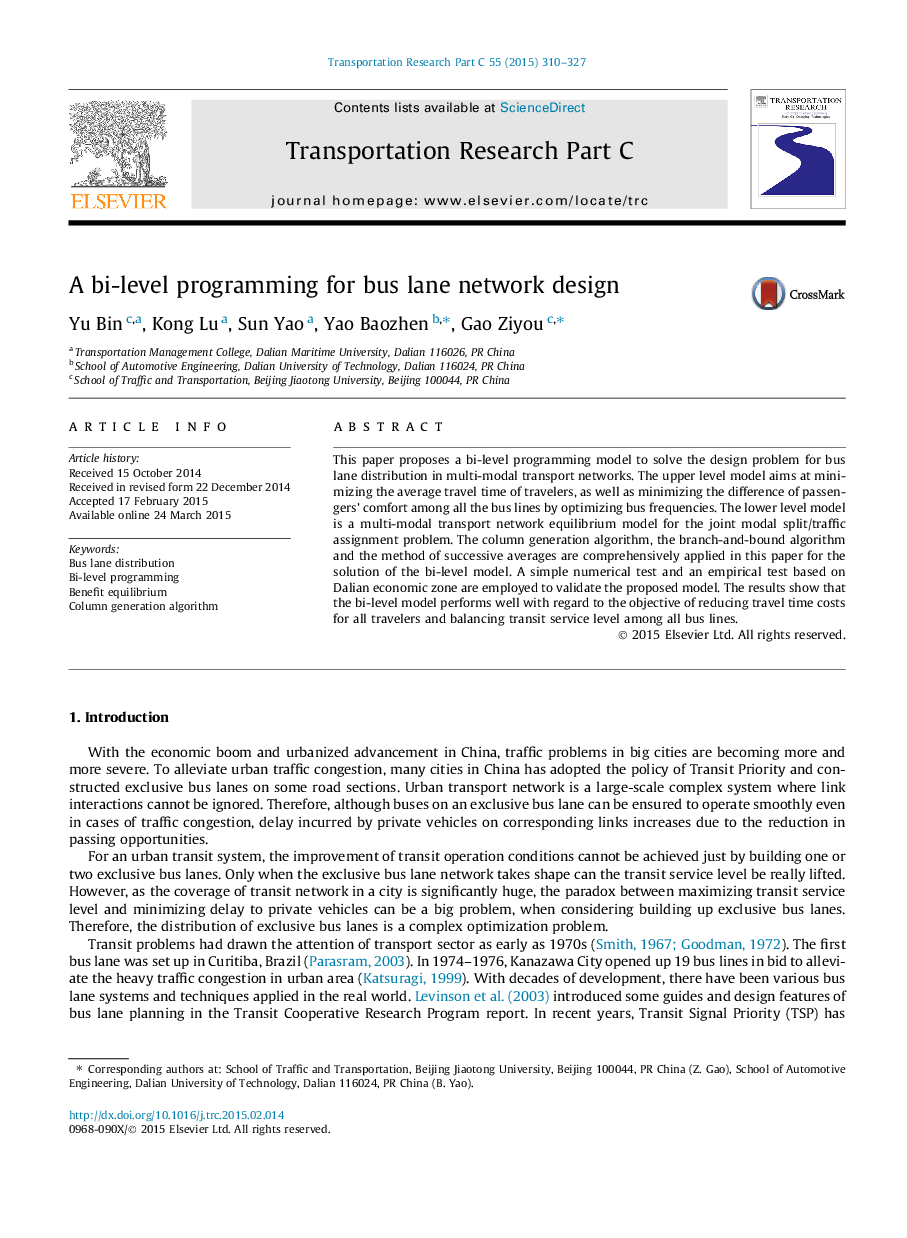| Article ID | Journal | Published Year | Pages | File Type |
|---|---|---|---|---|
| 6936843 | Transportation Research Part C: Emerging Technologies | 2015 | 18 Pages |
Abstract
This paper proposes a bi-level programming model to solve the design problem for bus lane distribution in multi-modal transport networks. The upper level model aims at minimizing the average travel time of travelers, as well as minimizing the difference of passengers' comfort among all the bus lines by optimizing bus frequencies. The lower level model is a multi-modal transport network equilibrium model for the joint modal split/traffic assignment problem. The column generation algorithm, the branch-and-bound algorithm and the method of successive averages are comprehensively applied in this paper for the solution of the bi-level model. A simple numerical test and an empirical test based on Dalian economic zone are employed to validate the proposed model. The results show that the bi-level model performs well with regard to the objective of reducing travel time costs for all travelers and balancing transit service level among all bus lines.
Keywords
Related Topics
Physical Sciences and Engineering
Computer Science
Computer Science Applications
Authors
Yu Bin, Kong Lu, Sun Yao, Yao Baozhen, Gao Ziyou,
